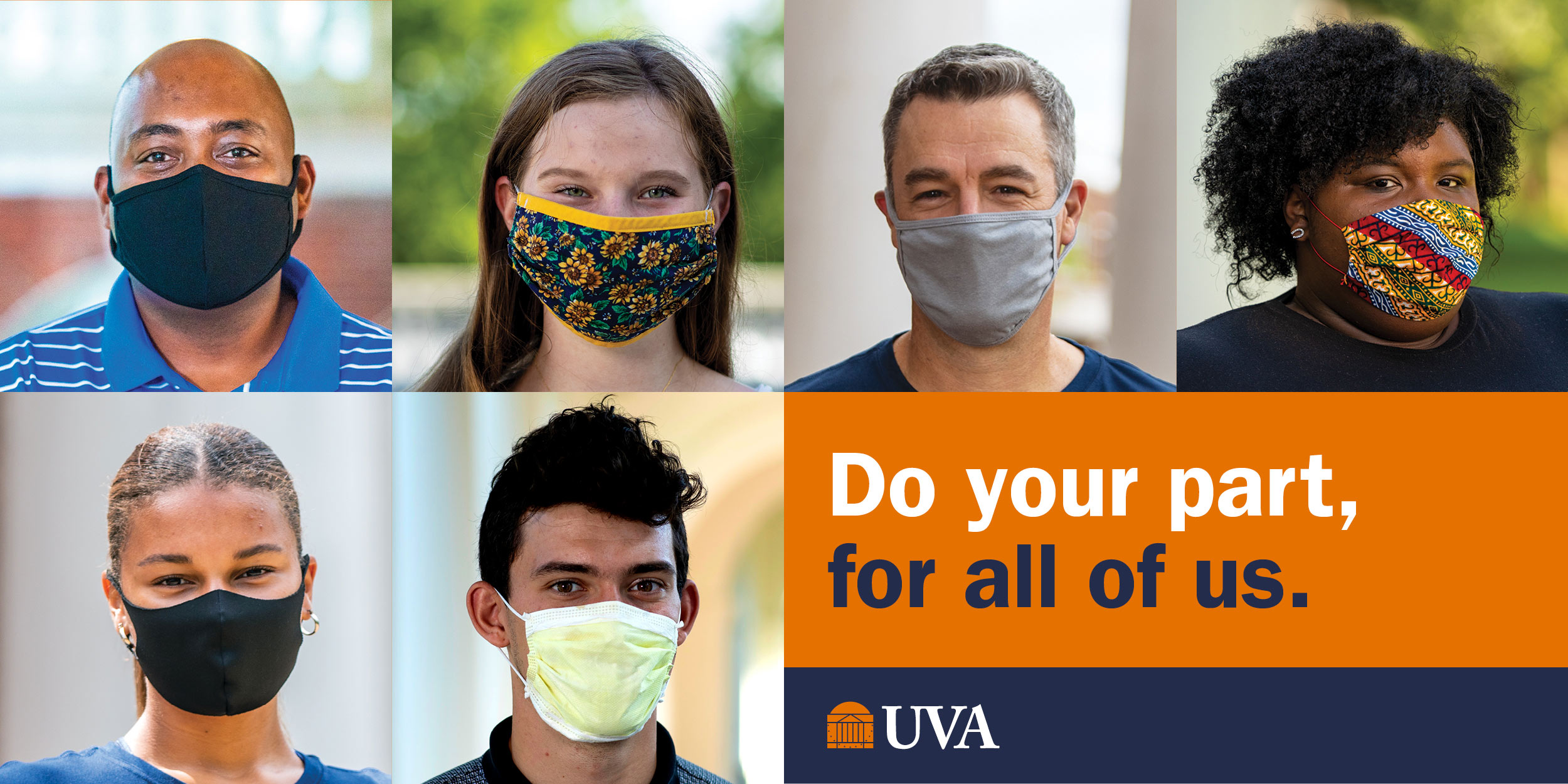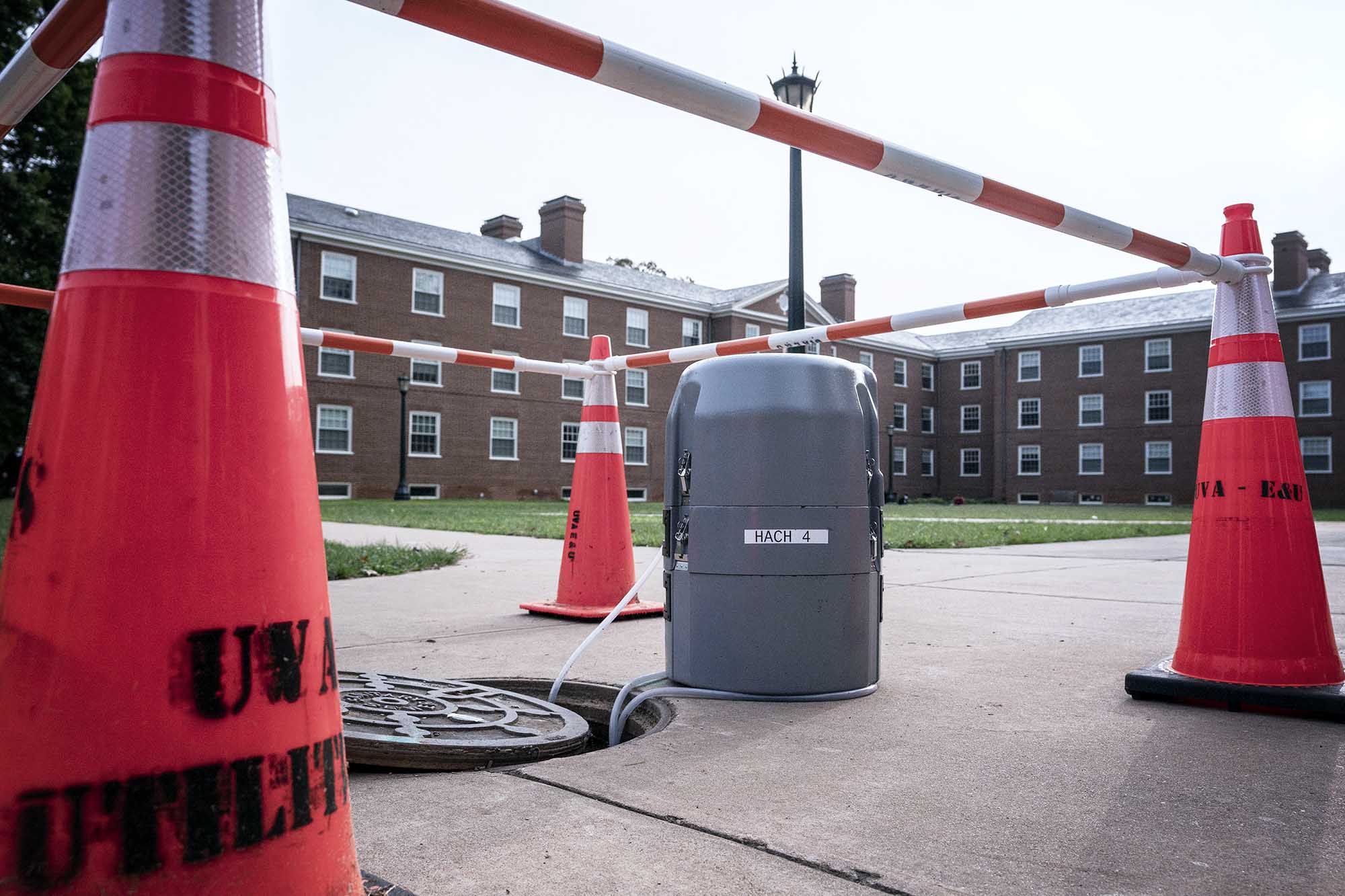In a podcast released Monday, Dr. Amy Mathers spoke with CNN’s Dr. Sanjay Gupta about the wastewater surveillance program at the University of Virginia, which UVA has used to detect and quickly contain COVID-19 infections in dormitories.
Gupta’s daily podcast, “Coronavirus: Fact vs. Fiction,” reaches a large audience around the world. CNN’s chief medical correspondent started the podcast in late February as the coronavirus pandemic ballooned. It hit 1 million downloads within a week, topping Apple’s podcast list in the News category.
Gupta spoke with Mathers about the possibilities of wastewater surveillance testing, not only for universities, but for nursing homes and other long-term care facilities, neighborhoods and even entire cities. Mathers walked Gupta through the process at UVA, from her partnership with School of Engineering associate professor Lisa Colosi-Peterson, who helped Mathers develop the testing process, to what happens if virus samples are detected.
“We test the wastewater every day, and if we see a new spike in the number of RNA particles that we are finding in that wastewater [indicating virus presence], we’ve gone in and tested all of the occupants in that building,” Mathers told Gupta. “We have found asymptomatic positive [cases], pulled them out and put them in isolation.”
Gupta called the research “fascinating.”
“It is still early days for this new testing,” he said. “We are all coming up with new things together; we are all learning together. But something like this offers some hope for better surveillance of the virus.”
Listen to the podcast, and learn more from Mathers in the Q&A below.

Q. Eight months ago, the idea of testing wastewater for the presence of a virus was virtually unheard-of. Today, it’s a common practice at UVA and elsewhere and the subject of a podcast by CNN’s top medical correspondent. How surprising – and satisfying, professionally – has that been?
A. The pandemic has brought so many challenges, but it has also brought opportunities to execute and then highlight innovative approaches to address these challenges. I have been working to understand pathogens in wastewater in hospital plumbing for several years and that familiarity was a helpful foundation for tracking SARS-CoV-2 RNA in wastewater. It has been extremely rewarding to be in a position to use skill sets and knowledge that can address some of the issues that have arisen with the pandemic.
Q. Dr. Gupta’s interest went beyond the initial application of this program in college dorms, and seemed to also focus on the broader potential use of wastewater surveillance in neighborhoods, for example. Do you share that excitement?
A. Using pooled wastewater as a surveillance technique to have a more targeted testing strategy has many potential applications for where people live. This could help to monitor locations more passively and then target individuals for testing when more SARS-CoV-2 RNA is being shed in the wastewater from a confined area. In addition, there is a wider use of wastewater monitoring that could be used at the population level, and although that is different from our current project and mission, I think it is a potential application with a great deal of promise.
Q. In the podcast, you mentioned partnering with engineering associate professor Lisa Colosi-Peterson to develop and launch UVA’s program. Has this kind of cross-disciplinary problem-solving been common as UVA has confronted the pandemic on Grounds?
A. The pandemic has encouraged a great deal of cross-disciplinary work. Dr. Colosi-Peterson and I originally met via the UVA Global Infectious Diseases Institute and had a joint proposal funded from the UVA Center for Engineering in Medicine on antimicrobial resistance in wastewater. This established collaboration made the ability to initiate the COVID wastewater project much faster.
However, there are many examples of successful team science which have emerged during the pandemic. The only way to solve many of the challenges we face with COVID-19 is across disciplines, so it is also an exciting time for innovative approaches to team science.
Media Contact
Article Information
November 9, 2020
/content/cnns-dr-sanjay-gupta-turns-uva-example-wastewater-surveillance-testing

